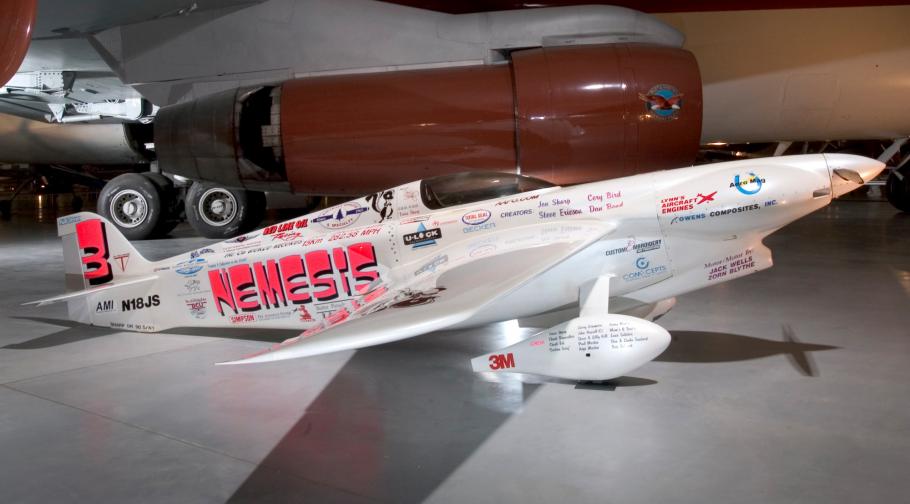3 Images
The most successful aircraft in air racing history, Nemesis dominated its competition, winning 47 of its 50 contests from 1991 until its retirement in 1999. Flown by pilot and designer Jon Sharp, it won nine consecutive Reno Gold National Championships and 16 world speed records for its class.
Nemesis was the International Formula One points champion every year from 1994 to 1998. In 1991 it won the George Owl Trophy for design excellence. In 1993, '96, and '98, it won the Fédération Aéronautique Internationale's Louis Blériot Medal for the greatest achievement in speed. In 1993, '94, '95, and '99, Nemesis won the Pulitzer Trophy for air racing speed records. The airplane is built of pressure-molded graphite epoxy foam core sandwich.
Display Status
This object is on display in Nation of Speed at the National Air and Space Museum in Washington, DC.

Object Details
Date
1991
Type
CRAFT-Aircraft
Manufacturer
Nemesis Air Racing Team
Dimensions
Wingspan: 6.25 m (20 ft 6 in)
Length: 5.6 m (18 ft 6 in)
Height: 1.02 m (3 ft 4 in)
Weight, empty: 236 kg (520 lb)
Weight, gross: 350 kg (770 lb)
Top speed: 467 km/h (290 mph)
Engine: Continental O-200 air-cooled engine, 100 hp
Materials
Pressure Molded Graphite Expoxy Foam Core Sandwich
Inventory Number
A20000657000
Credit Line
Gift of Jon and Patricia Sharp
Data Source
National Air and Space Museum
Restrictions & Rights
Open Access (CCO)
For more information, visit the Smithsonians Terms of Use.




